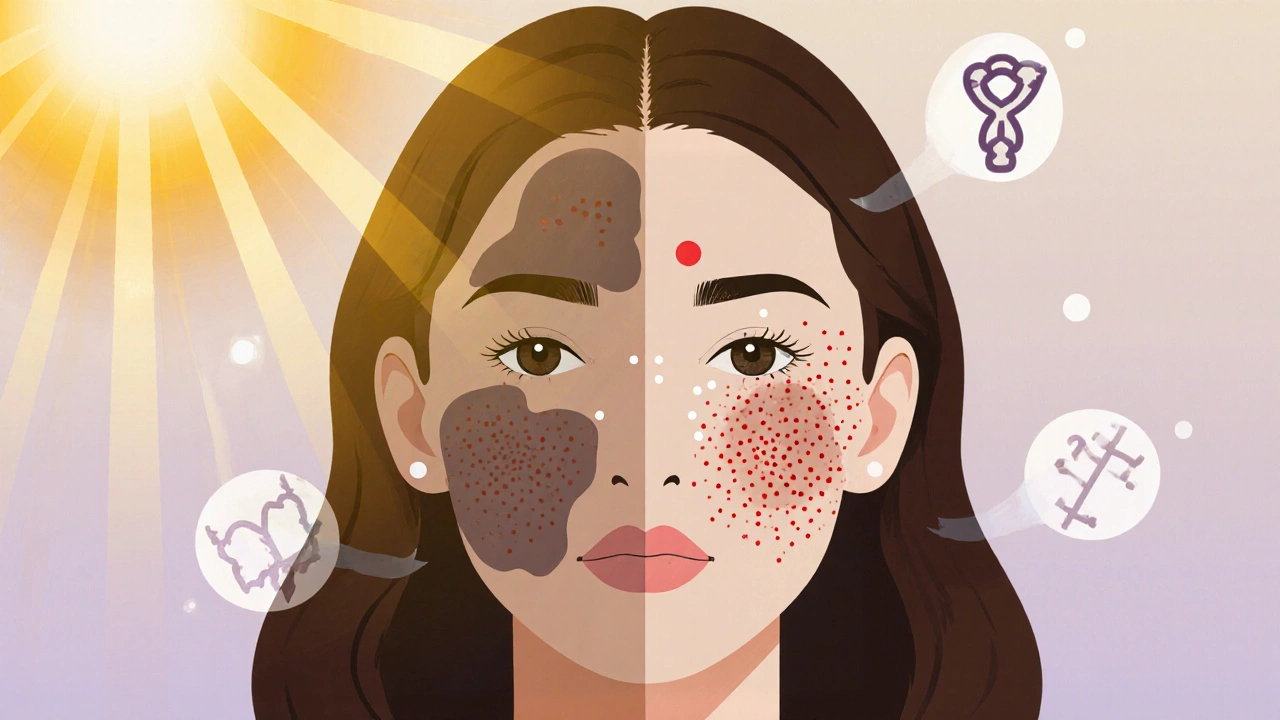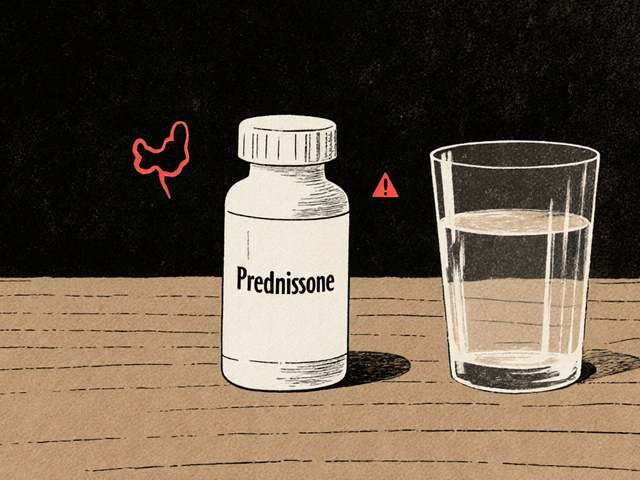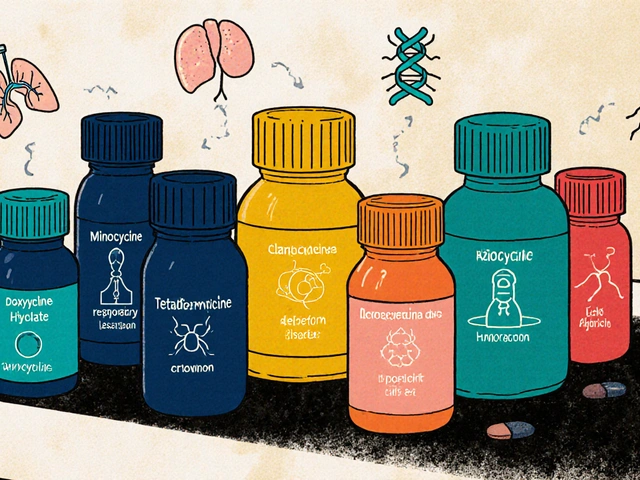Melasma: Causes, Triggers, and What Actually Works
When you see those patchy brown or gray-brown spots on your face—especially on the cheeks, forehead, or upper lip—you’re likely dealing with melasma, a common skin condition characterized by symmetrical patches of hyperpigmentation, often triggered by hormones and UV exposure. Also known as chloasma, it’s not dangerous, but it can be frustratingly persistent, especially for women in their 30s to 50s. Unlike regular sun spots, melasma doesn’t fade easily with time or basic skincare. It sticks around because it’s rooted in how your skin’s pigment cells respond to internal and external cues.
Hormonal changes, such as those from pregnancy, birth control pills, or hormone replacement therapy, are among the top triggers. That’s why it’s sometimes called the "mask of pregnancy." But even if you’re not pregnant, your hormones can still play a role. Then there’s sun exposure, the biggest external driver. UV light doesn’t just darken melasma—it wakes up the pigment-producing cells and keeps them active, even on cloudy days or through windows. And if you have darker skin tones, you’re more prone to it, not because of hygiene or lifestyle, but because your skin naturally produces more melanin.
Many people try bleaching creams, laser treatments, or home remedies like lemon juice or aloe vera, but most of these either don’t work long-term or make things worse. The real answer isn’t about masking the color—it’s about stopping the trigger. That means daily broad-spectrum sunscreen (SPF 30 or higher, reapplied every 4 hours), avoiding hormonal triggers when possible, and using proven topical treatments like hydroquinone, tranexamic acid, or retinoids under a doctor’s guidance. It’s not a quick fix, but with consistency, most people see noticeable improvement.
What you’ll find in the posts below isn’t a list of miracle cures. It’s a practical collection of real-world insights—how certain medications might worsen melasma, why some skin treatments backfire, and what science actually says about managing it without risking side effects. No fluff. No hype. Just what works, what doesn’t, and why.









